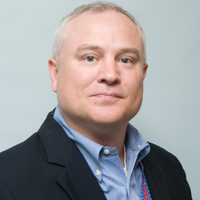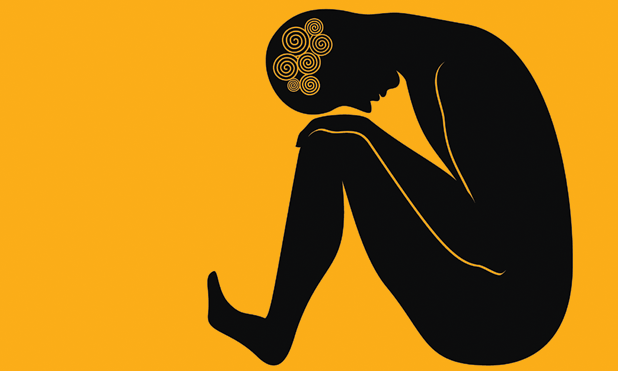On a balmy evening in mid-May 2017, Chris Cornell, the legendary head of the internationally renowned rock band Soundgarden, strummed his last chord at the Fox Theater in Detroit and headed to the MGM Grand Hotel. According to the police report, he swallowed a few tablets of the antidepression drug Ativan in his room and called his wife. “I’m just tired,” he said and hung up the phone. Later that night, at the request of his concerned wife, his bodyguard forced open Cornell’s door to discover him on the bathroom floor, an exercise band tied around his neck. His death was ruled a suicide by hanging, the conclusion of a life riddled with drug abuse and a depression he’d never managed to shake.
In the aftermath of Cornell’s death, a national conversation about depression and suicide grew more intense. Celebrities, like comedian and musician Russell Brand, spoke out about their own depression and pointed to alarming statistics, including the fact that more than 15 million people in the United States suffer from depression. According to a 2015 U.S. Centers for Disease Control (CDC) study, half of the 120 Americans who take their lives every day have been diagnosed with the disease. “I don’t stay on my own in my own head,” Brand stated on an episode of The Trews, his YouTube show, “because I know it’s a dangerous place to be.”
Treatments Falling Short

Despite the urgency of these numbers, science has yet to provide an adequate solution. The most well-known drugs for depression treatment, including Prozac and Wellbutrin, “are not very effective on the whole,” says Marc Dubin, a professor of psychiatry and neuroscience at Weill Cornell Medical College in New York City (Figure 1, right). In fact, the difference between active and placebo response rates in most medication trials is very small. “Quite often, there’s a 40% placebo rate and then a 55% active drug response rate,” Dubin continues. Worse, nearly all of these drugs can cause gastrointestinal disturbances, headaches, and weight gain as well as inhibit libido. A third of all people have no response to antidepressants whatsoever, yet more than 11% of all Americans aged 12 and over are prescribed them, making these drugs the third most common category of medications taken by Americans, according to the CDC.
Among the few other options is electroconvulsive therapy (ECT), a treatment that sends electric currents through the brain to trigger a seizure, essentially resetting the patient’s brain chemistry. Although it relieves symptoms in roughly 85% of patients, there are some nasty side effects, including severe memory loss that can last for months, as well as more serious medical problems such as heart attack.
Other treatments like transcranial magnetic stimulation (TMS) and deep brain stimulation (DBS) can target more specific areas of the brain. Unlike ECT, TMS does not require anesthesia, so patients can drive themselves to and from the appointment, but it’s also not nearly as effective. In use for depression since the mid-1990s, TMS employs a magnet to send a sequence of quick electrical pulses into a targeted region of the brain. Among patients, 60% see positive results, and side effects are minimal; however, one course of treatment is time consuming. Patients must receive treatment once a day for six weeks, and the results are only seen halfway through that period. There is also currently no way to predict who will respond to treatment and who will not.
DBS is another, more targeted therapy that may prove useful for depression, but it isn’t quite ready for a clinical setting. The treatment, which involves surgically placing a device in the problematic region of the brain, electrically stimulates the targeted area much as a pacemaker does. For diseases with more clear-cut neural targets, like Parkinson’s and dystonia, DBS completely eliminates symptoms. While there is evidence that DBS may also work for diseases like depression, it’s still too early to claim results.

Darin Doughtery, director of the Division of Neurotherapeutics at Massachusetts General Hospital in Boston (Figure 2, right), has experimented with a type of DBS, called an “open-loop DBS,” that stays on all the time and is placed in an inner region of the brain responsible for motivation and reward known as the nucleus accumbens. But, while open-label trials showed that it seemed to work for patients for whom all else had fallen short, pivotal trials for market approval failed. A similar study by Helen Mayberg, a neurologist at the Emory University School of Medicine in Atlanta, Georgia, targeted another area, the subgenual cingulate cortex, but that failed as well. “So at the end of the day, with the stimulation, it looks like open-loop DBS is good for movement disorders,” says Doughtery, “but probably not effective, at least at those two targets, for depression.”
Pinpointing the Problem
For all existing treatments—antidepressants, ECT, TMS, and DBS—there’s only a general understanding of how and why they work. That reflects a larger problem in the field of neuropsychology: what causes depression in the first place? The diagnostic criteria for depression has always been a bit vague, as has the neurophysiology of the mechanisms at work, leaving individuals like Chris Cornell without great treatment options. Chemical imbalances in the brain cause depression symptoms, but these in and of themselves are usually triggered by something else gone awry in the brain, similar to an inflammatory response. In fact, some researchers have argued that depression symptoms are a direct response to the interactions among neurotransmitters, neurocircuits, and the immune system.
This has led scientists to take a step back to explore the root of the problem—a quest that requires watching brain activity in real time. In a paper published in January 2017, Dubin and his colleagues scanned the neural circuitry of more than 1,000 patients’ brains using functional magnetic resonance imaging (fMRI). Among the 40% of patients who had been diagnosed with depression, the researchers were able to find some commonalities in the degree and location of abnormal circuitry.
In a normal brain, neural circuitry fluctuates between resting and active states, but this is off-kilter in the depressed brain. The default mode network (DMN) located in the middle of the brain is most active when you’re at rest (say, sitting on a park bench with your eyes closed); but when the friend you were meeting walks up and says hello, other networks related to language processing and visual stimuli spring to action, and your default mode shuts down. Depressed people, however, have a DMN that is basically functioning all the time. This happens, researchers think, because the nodes of the network have become more tightly connected to each other, causing them to work simultaneously. Sustained activity of the DMN often coincides with negative ruminations, a common symptom of depression.
“They get stuck in that cycle, that loop of negativity, and they can’t break out of it,” says Dubin. Other areas of the brain tend to underperform in depressed patients, like the central executive network, a region located just behind the forehead that is responsible for task planning and self-control. Although these are known trends, the activity levels of each of the over- or underactive circuits vary, and, until now, no one has been able to sort different patterns of activity into categories. So far, Dubin and his colleagues have identified four different types of disease based on neural activity patterns. It’s the first real hint that there might be biological markers to distinguish different forms of depression.
More Targeted Treatment Methods

New biological markers might mean more targeted treatments for depression are just over the horizon. In one study, Michael Fox, associate director of the Berenson-Allen Center for Noninvasive Brain Stimulation at Beth Israel Deaconess Medical Center in Boston (Figure 3, right), and his colleagues found that TMS works best for patients in which the target site is well-connected to other problematic areas closer to the center of the brain in the limbic region—the part that regulates emotion and memory formation. “That was exciting to us because what it meant is that we could take a region of interest in the limbic system, see what it’s connected to in the dorsolateral prefrontal cortex, and that might identify an optimum stimulation site for therapy,” says Fox. For now, this study is guiding doctors in choosing which kind of treatment will work best on individual patients, but it’s still not pinpointing the biological markers in the brain that cause the symptoms in the first place, Fox continues.
This is a fundamental problem when choosing targets in the brain using just imaging technology like fMRI. Imaging guides one to a location of interest, but it doesn’t tell whether that area is causing the problem. It’s possible that the real issue is further upstream in the circuitry, says Fox. “Those factors are really important when you’re trying to take a neuro imaging finding and translate that into a therapy,” he adds.
If the targeted area is indeed causing the symptom, therapy aimed at that area might really help. But if it’s only compensating, “you could actually make people worse with the exact same therapy,” according to Fox. That’s why it’s important to know where the problem originated in the brain, not just where it lights up in the imagery. The only way to truly identify the root of the problem necessitates a more experimental approach, which, in brain studies, isn’t always pretty. It requires actual stimulation of the brain or, in some cases, damaging parts of it with lesions. Fox and his colleagues have been conducting studies using lesions to determine the origin of hallucinations and delusions in the brain, a technique that involves mapping damaged areas in the brains of patients with preexisting lesions who have similar symptoms and then finding commonalities across patients. A similar study might be performed for depression.
Honing the Target
With refined targets, therapies like TMS and DBS may become more effective and less time consuming, but more work needs to be done in these areas. For DBS, a research group in Germany led by neurologist Tom Schlaepfer has shown better results in another area of the brain, and Doughtery is currently testing fiber tractography, a three-dimensional modeling technique used to identify neural tracts in the brain and so refine targeting. It might also be that DBS works best for depressed patients in a closed-loop system, where “when certain thresholds are reached that are believed to be abnormal and associated with symptomatology,” says Dougherty, “it then prods the system to stimulate another brain area that suppresses or mitigates that dysfunction.” Dougherty and his colleagues recently received a US$30 million grant from the Defense Advanced Research Projects Agency to develop this type of closed-loop DBS for neuropsychiatric illness.
In a 2014 interview with Rolling Stone magazine, Cornell spoke about the unpredictability and hopelessness of depression. “No matter how happy you are, you can wake up one day without any specific thing occurring to bring you into a darker place, and you’ll just be in a darker place anyway,” he said. “To me, that was always a terrifying thought because that’s something that—as far as I know—we don’t necessarily have control over.” Not yet, at least, although these new avenues of research may bring insights into depression within the decade.
Works Consulted
- L. A. Pratt, D. J. Brody, and Q. Gu. (2011, Oct. 19). Antidepressant use in persons aged 12 and over: United States, 2005–2008. Centers for Disease Control and Prevention National Center for Health Statistics. Atlanta, GA. [Online].
- J. Aswad. (2017, May 19). Details emerge about Chris Cornell’s suicide in leaked police report. Variety. [Online].
- C. W. Drapeau and J. L.McIntosh. (2016). U.S.A. suicide 2015: Official final data. American Association of Suicidology. Washington, D.C. [Online].
- A. T. Drysdale, L. Grosenick, J. Downar, K. Dunlop, F. Mansouri, Y. Meng, and C. Liston, “Erratum: Resting-state connectivity biomarkers define neurophysiological subtypes of depression,” Nature Medicine, vol. 23, no. 2, pp. 264–264, 2017.
- K. Grow. (2017, May 19). Soundgarden’s Chris Cornell on “Superunknown,” depression and Kurt Cobain. Rolling Stone. [Online].
- C. Liston, A. C. Chen, B. D. Zebley, A. T. Drysdale, R. Gordon, B. Leuchter, and M. J. Dubin, “Default mode network mechanisms of transcranial magnetic stimulation in depression,” Biological Psychiatry, vol. 76, no. 7, pp. 517–526, 2014.
- National Institute of Mental Health. Major depression among adults. [Online].
- W. Breitbart, “Cancer pain and suicide,” in Advances in Pain Research and Therapy, K. M. Foley, J. J. Bonica, and V. Ventafridda, Eds. New York: Raven Press, 1990, pp. 399–412.



